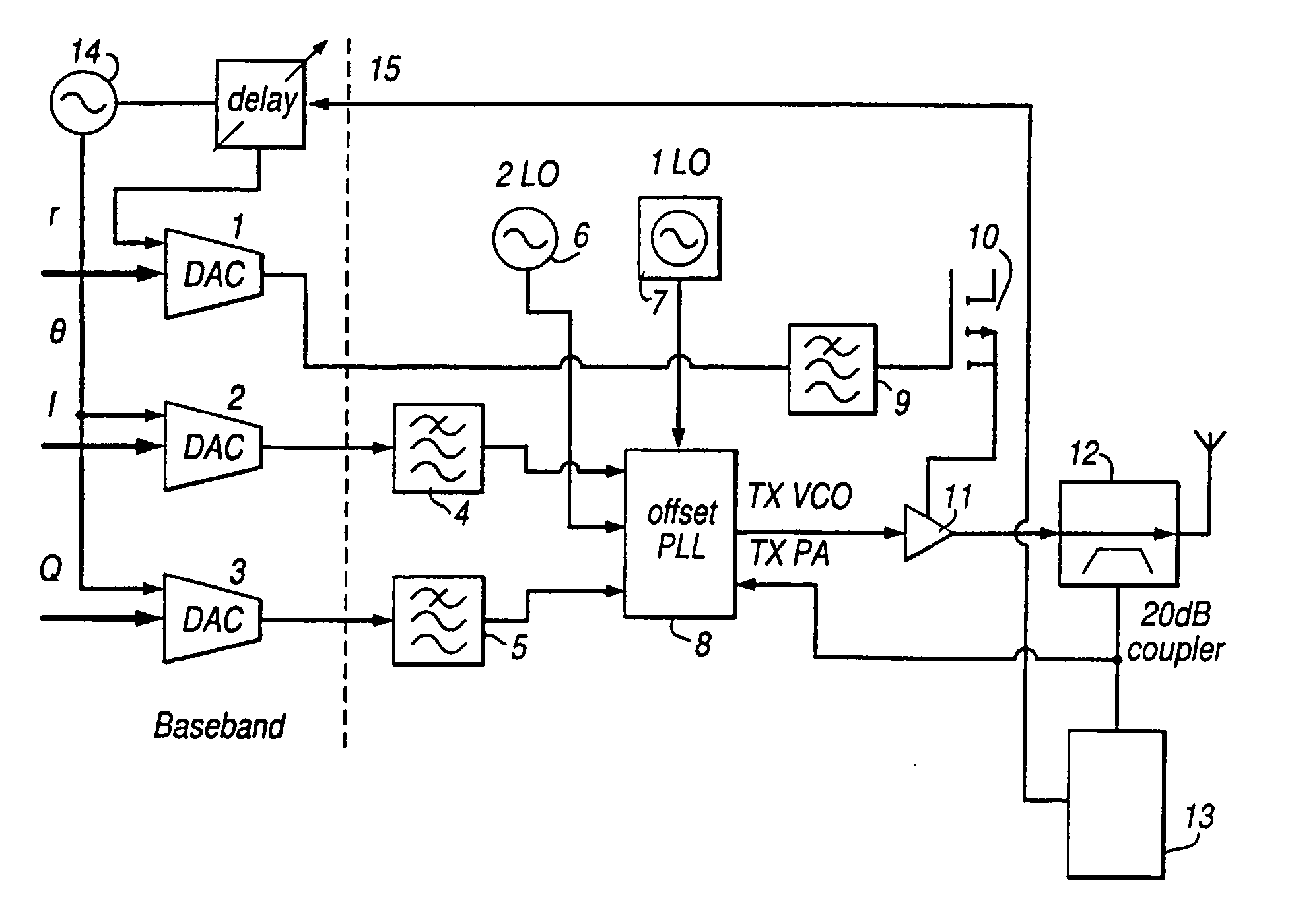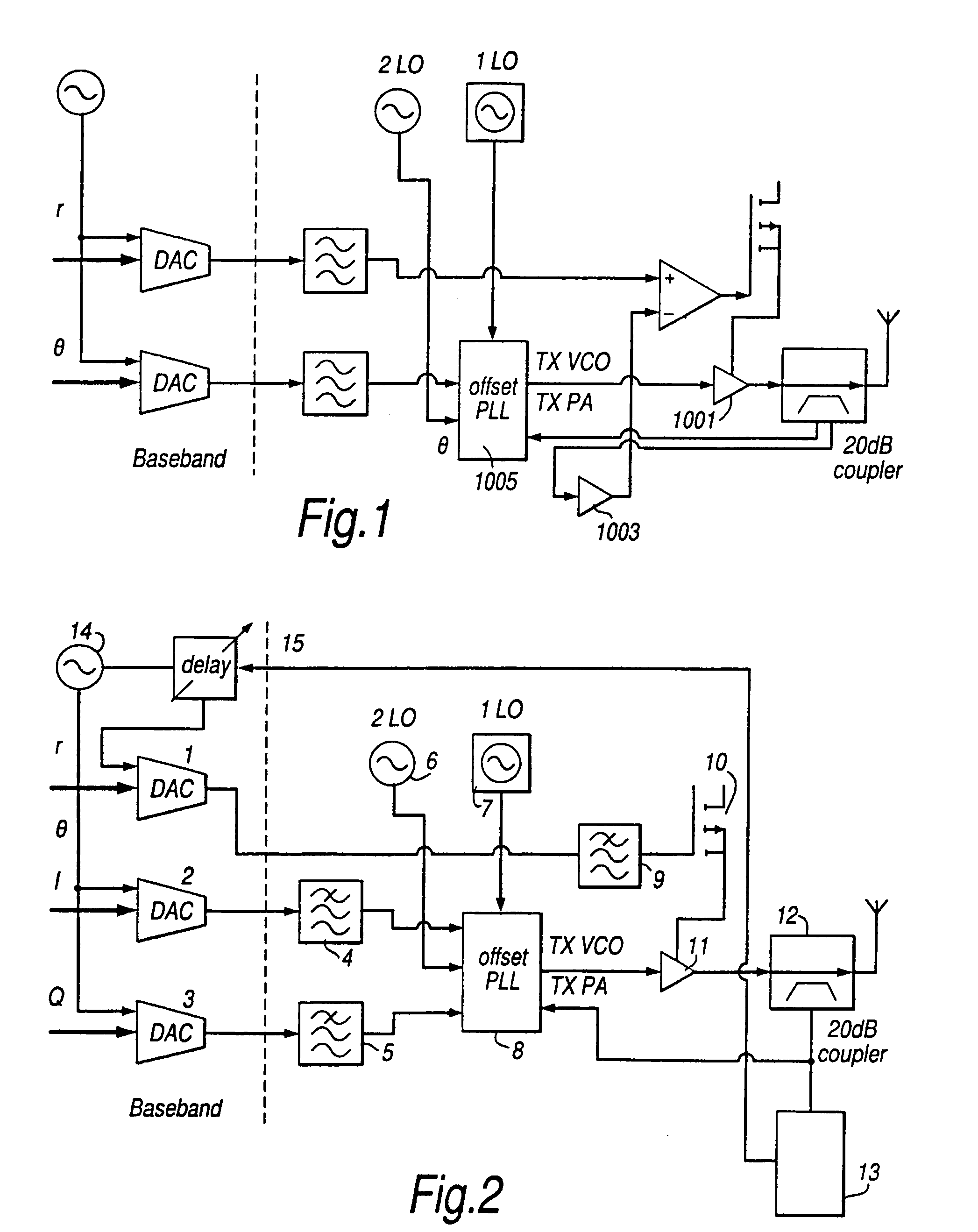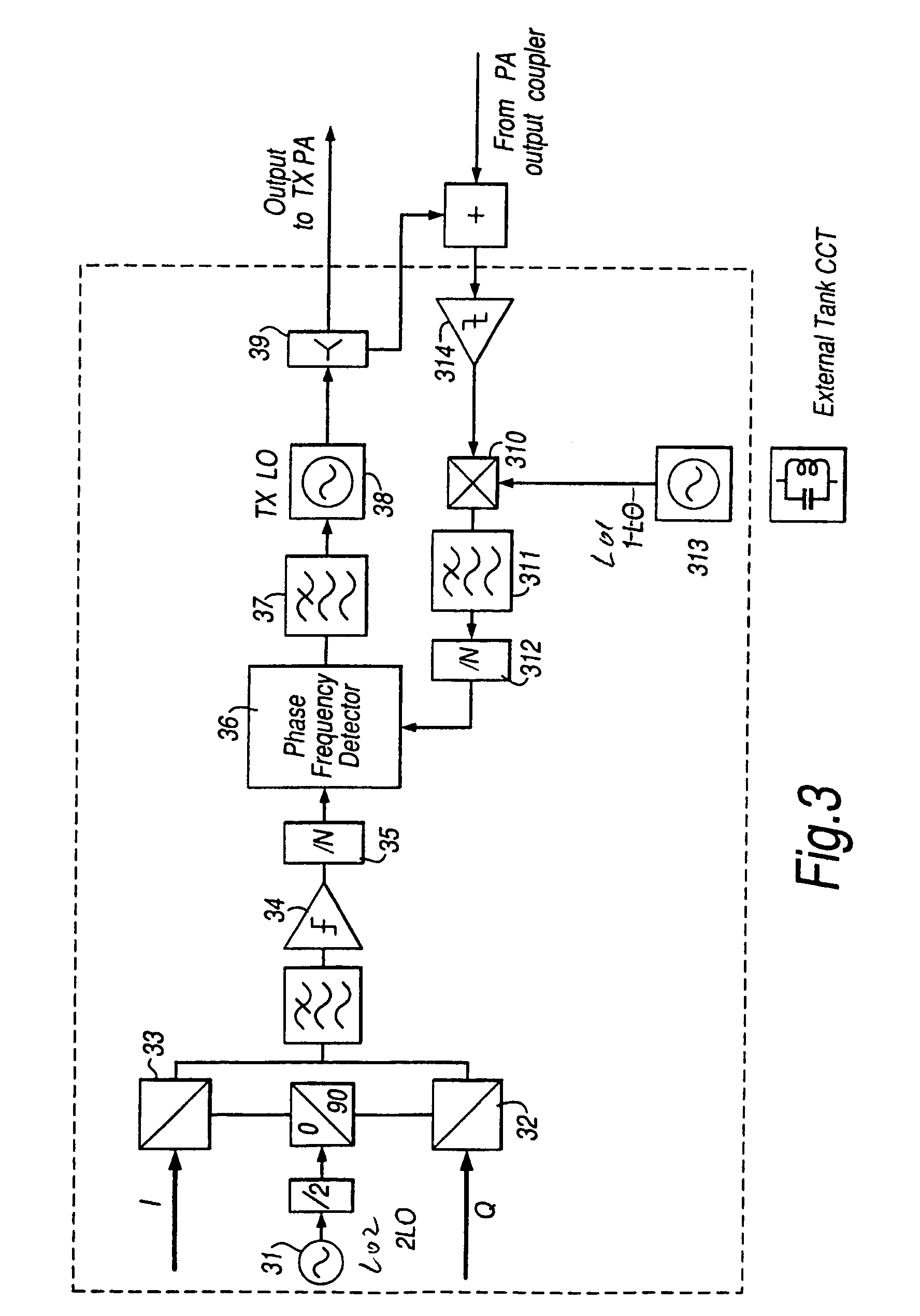Linear RF power amplifier and transmitter
- Summary
- Abstract
- Description
- Claims
- Application Information
AI Technical Summary
Benefits of technology
Problems solved by technology
Method used
Image
Examples
Embodiment Construction
:
[0044]With reference to FIG. 2, a first preferred embodiment of the present invention will now be described.
[0045]FIG. 2 shows a block diagram of a linear PA and transmitter arrangement according to the present invention. The baseband processor of the transmitter resolves the signal into amplitude (r) and phase components (8). The phase component (8) is then further resolved into its in phase (I) and quadrature (Q components, wherein:
I=cos (θ); and
Q=sin (θ).
[0046]The resolution of the input signal into its amplitude r and
[0047]In-phase and quadrature components I and Q takes place at baseband before upconversion.
[0048]The baseband output is connected to DACs 1, 2 and 3 DAC 1 converts the amplitude representation of the signal, whereas DACs 2 and 3 are used to provide a phase representation of the signal. The DACs are provided with a clock signal from an oscillator 14. The respective I and Q signals output from the DACs are then interpolated with filters 4 and 5 and subsequently use...
PUM
 Login to View More
Login to View More Abstract
Description
Claims
Application Information
 Login to View More
Login to View More - R&D
- Intellectual Property
- Life Sciences
- Materials
- Tech Scout
- Unparalleled Data Quality
- Higher Quality Content
- 60% Fewer Hallucinations
Browse by: Latest US Patents, China's latest patents, Technical Efficacy Thesaurus, Application Domain, Technology Topic, Popular Technical Reports.
© 2025 PatSnap. All rights reserved.Legal|Privacy policy|Modern Slavery Act Transparency Statement|Sitemap|About US| Contact US: help@patsnap.com



